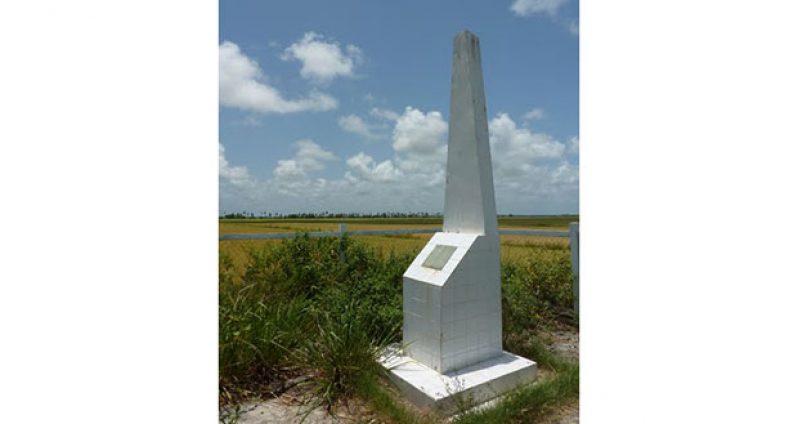By Mohamed Khan
BUSH Lot, on the Essequibo Coast, is an Indian immigration time-expired settlement. Indentured immigrants working on the colonial sugar estates on Hamburg Island were relocated to Bush Lot after Hamburg Island was flooded out. This was to discourage the then heavy migration and repatriation claims which were being made by the Indian immigrants at the end of their 10-year contract.Small quantities of land were granted to these ex-indentured immigrants for rice growing with the intention to secure their presence as estate labourers on a part-time basis. In 1880, colonial Governor Dr. Guishburg purchased Bush Lot, an abandoned sugar estate, and divided it into house lots and two acres of rice lands to each of the 286 immigrants and their families in exchange for their passages back to India.
However, all the persons granted land on the settlement did not take up residence there because they were working elsewhere. Among this group of Indian indentured immigrants who moved to Bush Lot was Mc Doom Baksh, Imam Bacchus and his brothers Azeez, Koda and Razack.
Imam brought with him a pair of bulls from Hamburg and his sewing machine. He was a tailor by profession in the colonial days, and he and his three brothers each occupied two acres of rice lands.
The indentured immigrants lived in huts situated on a long stretch of mud road measuring several miles and looking like a squatter’s settlements.
They were successful in cultivating a number of paddy fields. The Essequibo lakes (Tapacuma, Capoey and Mainstay) were a valuable resource of water for the purpose of irrigation in the cultivation of their paddy fields.
Bush Lot was, in 1876, amalgamated with Anna Regina, which did not remain for long under canes, becoming a grazing ground for the immigrants’ cattle. The great flood of 1890 worsened their plight, since their crops, particularly rice, suffered badly.
Imam Bacchus used his pair of bulls during the colonial days to plough his two acres of rice field, and would at times take on jobs to plough the other indentured immigrants’ fields to make extra money. At night he would use his machine to sew clothes for the other settlers’ families, getting an additional source of income. He and his brothers left Bush Lot settlement after they incurred heavy debts due to the floods. They moved to Adventure, and later bought a rice mill at Middlesex, where they would buy the farmers’ produce and mill into rice before selling it.
Bacchus and his brothers then moved to Belle Plaine, Wakenaam, where they bought another estate and set up another rice mill. In 1950, they bought Affiance estate and started a shop with a dryer to buy farmers paddy. There they established a big rice mill. The estate now houses several complexes, including the most modern supermarket on the Essequibo Coast.
Today Bush Lot settlement has been transformed into a rice growing area with some farmers owning as much as 10 acres of rice land. A monument has been erected at the site where the indentured Indian immigrants lived.
The Indians still maintain the traditions and culture they brought from India, particularly their religions and festivals which were passed down from several generations.












